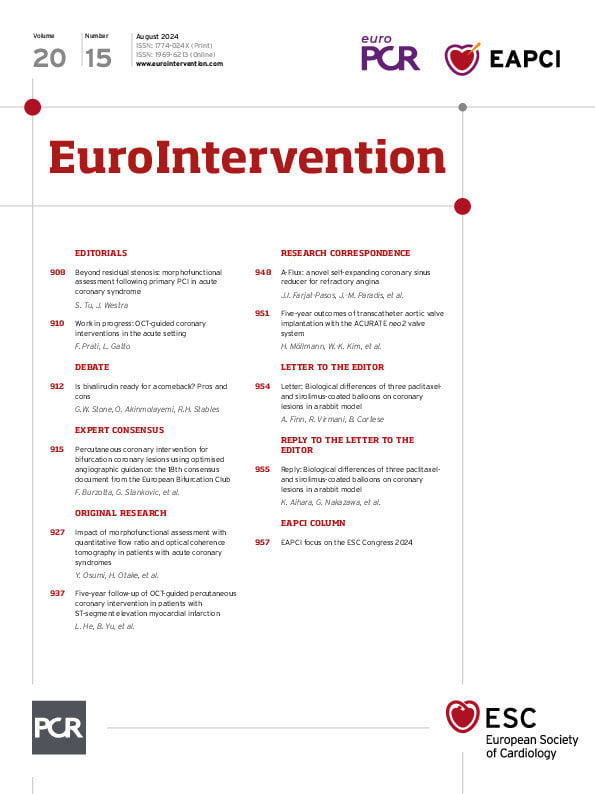Aihara et al recently published a paper aiming at comparing 3 different drug-coated balloons (DCBs) in a rabbit hindlimb arteries model and concluded that the 2 paclitaxel DCBs (PCBs) were associated with higher efficacy and lower distal toxicity as compared to the MagicTouch sirolimus DCB (SCB) (Concept Medical)1. The findings of this study are intriguing but highly debatable and should be put into the context of the available literature. In fact, although distal embolisation is a well-known concern after PCB implantation, as seen in several preclinical and clinical studies and case reports, this complication has never been demonstrated with any of the 3 available SCBs2.
We would also like to point out that a rabbit is not a commonly used model to evaluate DCBs, and rabbit data are not the preferred model for coronary safety assessment by most government regulatory bodies. On the other hand, the porcine model is much preferred because of its similarities to humans in terms of anatomy and local reactivity to the devices/drugs used. Thus, if the aim is to predict the safety and efficacy of a DCB in a human coronary or peripheral model, the swine is the best characterised model3.
Another point that merits comment is that the absolute levels of drug in the distal skeletal muscle discovered for both PCBs were extremely low, and this is not consistent with our published experience for the Ranger paclitaxel DCB (Boston Scientific; which is the same technology): in a hindlimb porcine artery model, at 28 days after treatment, 25% of distal skeletal muscle sections showed evidence of emboli, and detectable levels of drug were found in both skeletal muscle and the coronary band4. We found the same results in an experimental study conducted in porcine coronary arteries using the AGENT balloon (Boston Scientific) at 28 days (unpublished data). Given the crystalline structure of paclitaxel in AGENT, it is difficult to understand how levels in rabbit skeletal muscle were reported as 0 detected emboli as well as near 0 ng/mg drug levels − levels inconsistent with a large amount of prior preclinical work in this area. This may have something to do with the lack of complete sampling of skeletal muscle in this study: in fact, the authors sampled 2 skeletal muscle beds, whereas in the porcine model, 7 skeletal muscle beds are routinely sampled as well as the coronary band.
Dealing with all these points, the data reported here should be considered incomplete and may provide an inaccurate picture of the risks of distal embolisation using paclitaxel products. Most of what is reported here is not consistent with the body of experimental data collected by several centres dealing with preclinical studies.
Conflict of interest statement
The authors have no conflicts of interest to declare related to this manuscript.

